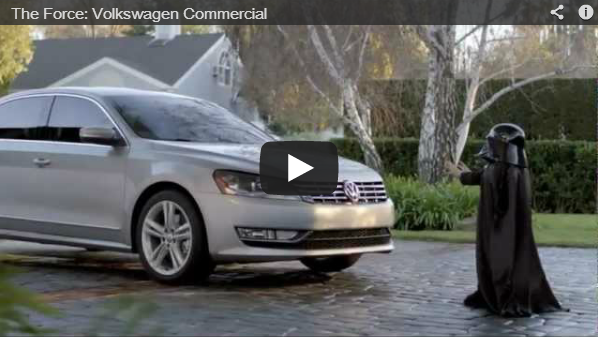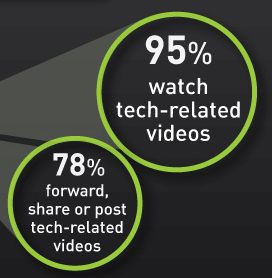Marketers looking to diversify their brands’ content portfolios pay attention to emerging practices like video marketing. According to the Content Marketing Institute, 70 percent of B2B and B2C companies already use video content to engage with new and existing customers, but 2013 will see wider adoption as brands realize the full power of online visual media.
At Brafton, we work closely with our clients to create video marketing strategies that help them break into new markets and win premium leads. Through our efforts to produce consistent visual content for clients, we’ve come across three industries that will benefit further from video marketing in 2013, including the auto, technology and news sectors. Below we offer insight into how video content will impact these industries moving forward.
Drive away with your new car….online
 With the economy rebounding, albeit slowly, American consumers will begin investing in pricier commodities like new automobiles. According to the U.S. Census, new-car sales make up about 15.8 percent of all retail activity in the U.S. More, Forrester Research and Barclays Research estimates that nearly 7 percent of new-car sales occur online. While the data highlights transactions that took place last year, buyers and sellers report that they would be open to doing more business online in 2013. Capgemini noted that 35 percent of Americans would be willing to purchase vehicles online, an increase of 14 percent from 2009.
With the economy rebounding, albeit slowly, American consumers will begin investing in pricier commodities like new automobiles. According to the U.S. Census, new-car sales make up about 15.8 percent of all retail activity in the U.S. More, Forrester Research and Barclays Research estimates that nearly 7 percent of new-car sales occur online. While the data highlights transactions that took place last year, buyers and sellers report that they would be open to doing more business online in 2013. Capgemini noted that 35 percent of Americans would be willing to purchase vehicles online, an increase of 14 percent from 2009.
Americans indicate that they’re willing to purchase or, at the very least research, new vehicles online, and marketers must identify key channels to use for superior engagement. Unruly’s “Stuck in First Gear?: The State of Automobile Marketing in Social Video” white paper shows that prospects who view video content also share media on their social networking accounts. In fact, auto video content on popular social media hubs can generate significant returns. Econsultancy contributor David Month noticed that German car maker Volkswagen accounts for more than one-quarter of all auto video shares, with each post reaching at least 25 new leads before being shared.
B2B technology: Always ahead of the curve
The technology business sector continues to evolve, embracing new trends. It makes sense that these brands would be among the first to see the value of high-quality video content, and they’ll dedicate more time perfecting their strategies in 2013.
 Cisco’s “It came to me in a stream…” report noted that 70 percent of U.S. broadband users viewed online video content once a week in 2012, spending an average of 100 minutes per week engaging with visual media. Of those video enthusiasts, the majority went on to share media with their personal networks. According to IDG Research, 95 percent of B2B tech buyers watch video content and 78 percent go on to share those posts with friends and colleagues.
Cisco’s “It came to me in a stream…” report noted that 70 percent of U.S. broadband users viewed online video content once a week in 2012, spending an average of 100 minutes per week engaging with visual media. Of those video enthusiasts, the majority went on to share media with their personal networks. According to IDG Research, 95 percent of B2B tech buyers watch video content and 78 percent go on to share those posts with friends and colleagues.
These visual clips also generated various actions from viewers, with 72 percent researching products further, 54 percent visiting vendor sits, 46 percent purchasing advertised products and 45 percent heading to a store to evaluate the item in person. With B2B tech buyers willing to depend on branded content posted to the web, relevant brands must develop video marketing strategies to reach these active consumers in 2013.
Breaking news: Online video beats cable TV
On Device Research reports that 92 percent of mobile video viewers share content with their friends and family. This trend coincides with survey results from Ask Your Target Market Research, which discovered that 37 percent of Americans watched fewer hours of cable TV news in 2012 than in the past five years. The data also found that more than half of Americans watched video news clips to stay informed.
With U.S. consumers looking for timely content, news hubs will be forced to create various forms of media to reach wider markets.
With U.S. consumers looking for timely content, news hubs will be forced to create various forms of media to reach wider markets. Americans still respond well to visual news coverage, but they want content and stories online, not broadcast through their home television sets.
Video content moving forward
With comScore reporting that 182 million Americans watched more than 38.7 billion online video content in December 2012, brands must recognize that consumer demand is alive and growing. To deliver engaging content to viewers, marketers need dynamic strategies that strengthen online relationships, and websites like YouTube can help spread media to relevant audiences.




